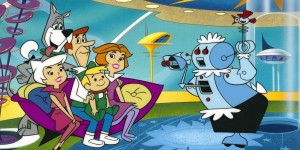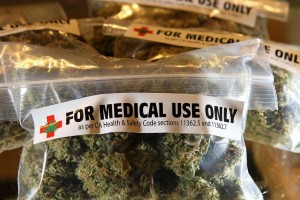There are no boundaries to where science can go. There are limitations, yes, but the future is endless. There will be new, more advanced tools that will allow for new knowledge and discovery. I found an article that has five speculations on where science will be in 100 years. 
A good way to start is to look at the history of where we have come. In the same article, the author lays out a timeline starting from 2000 BC until 1962. For example, he says that in 1609 telescopes and microscopes were founded while in 1950 double blind experiment was founded. As for the five speculations on where science will be in 100 years:
The first, being that the author believes there will be more change in the next 50 years than the last 400 years of science. This is because we have come so far with technology that finally they (technology and science) can be used together. In the past, there was not a mechanism that could help facilitate in a way that no one had even imagined.
The second, being a “century of biology”. According to Live Science, Biology has nine “umbrella” fields and each of those consists of subtopics. Biology is HUGE. It studies a variety of things from evolution to functions of living organisms. In general, there is a lot to learn but focusing on biology will lead to massive breakthroughs, seeing as it has the most amount of scientists.
The third, being taking advantage of our state-of-the-art computers. The author noted that information is growing by 66% per year. More realistic simulations and hypothesis searches will give new value and provide motivation for data collection.
The fourth, being that new knowledge will occur (it’s deeper than you think). The fact that experiments and studies that had negative results will in the end add positive value for research in the future. According to the author, there is already a journal called, “Journal of Negative Results in Biomedicine”. A huge part of this is that very large “non-invasive” statistical data collection will occur where no one is going to even realize an experiment was happening.
The last, being that science will create a new understandings. The information and size of the Internet is constantly increasing while our brain “level” is not. The author noted it as being “all one machine and that we are the machine”.
There is really no good explanation of what will happen to science in 100 years. These are all speculations by a particular individual. What we do know is that it will advance and advance and advance. And, within those advancements, we will advance more. I am excited for what we will see in our lifetime. It was very interesting to see a current experiment happening in class today–replacing the mouses FGFRL1 with the giraffes in their genes. I cannot wait to see what happens next Fall!
Sources:
http://static.srcdn.com/wp-content/uploads/The-Jetsons-and-Rosie-the-Robot.jpg
http://www.livescience.com/44549-what-is-biology.html
https://www.edge.org/conversation/kevin_kelly-speculations-on-the-future-of-science






